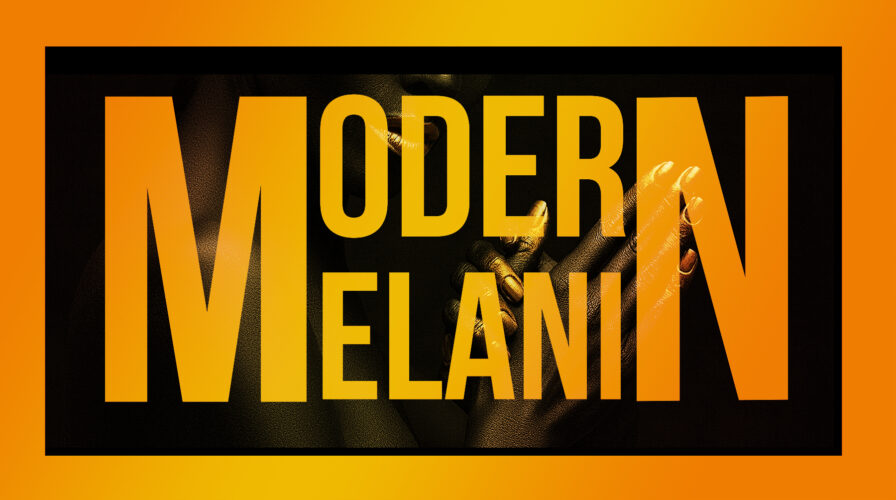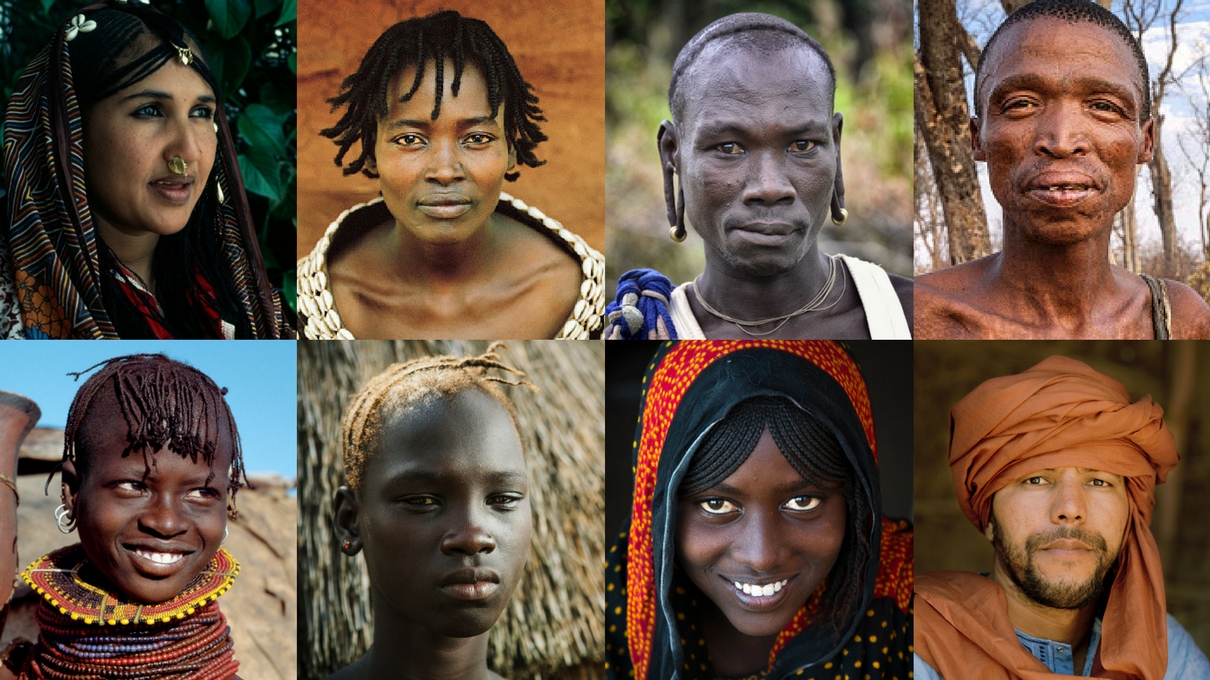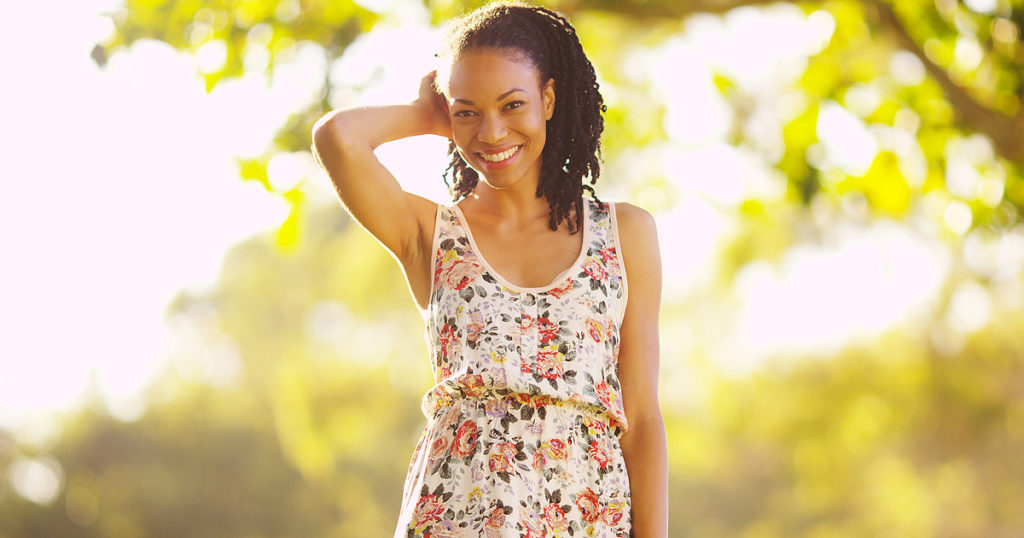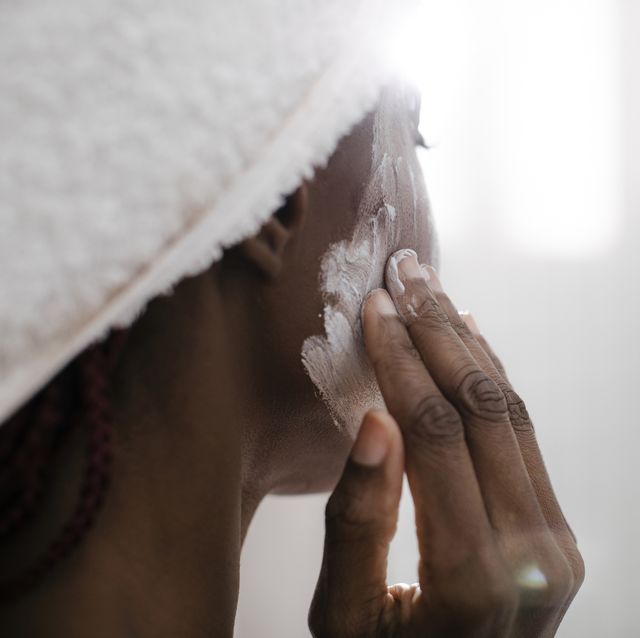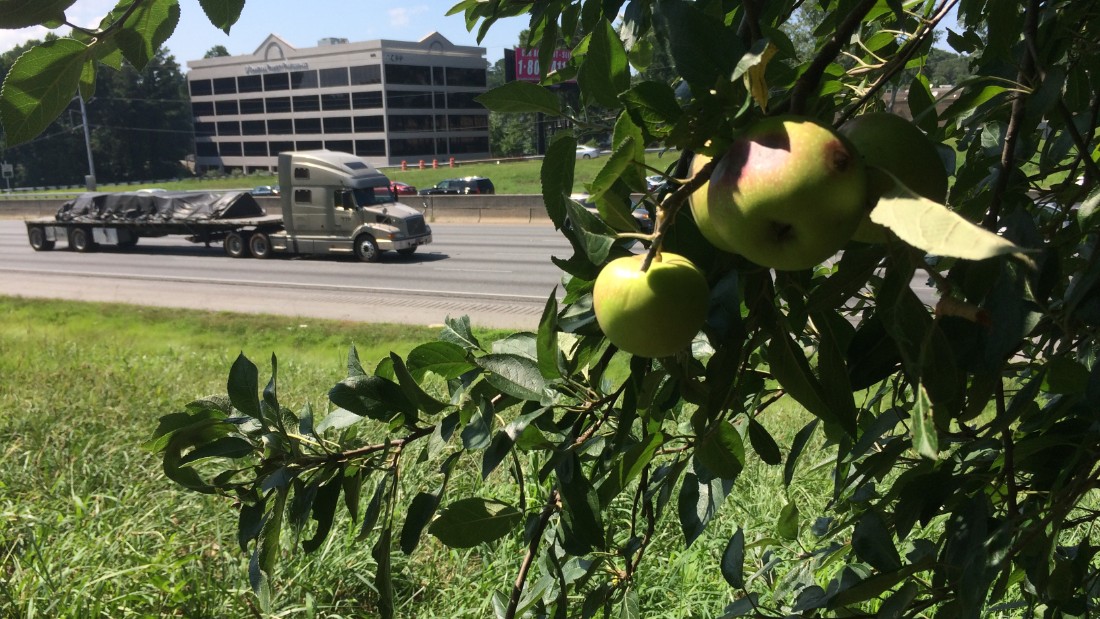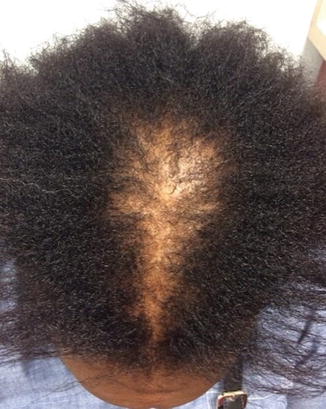Author: admin
A HUMAN HAS HUE: MELANIN
Jason Williams 1 month ago 4 min read There are two types of people in the world, humans and mankind. One can maintain a healthy homeostasis on planet earth naturally, while the other can not survive in Earth’s atmosphere without extreme accommodations. Cover Photo: Eddy Kamuanga Ilunga, Fragile 6, 2018. Acrylic and oil on canvas, 199 x 150 cm. From the Fragile Responsibility series. Courtesy the artist and October Gallery, London. There is a difference between ‘hue-mans’ and mankind. Mankind is more like a Neanderthal than a ‘hue-man’. Humans have existed on planet earth for millions of years, while mankind has yet to reach 10,000 years of existence. The common misconception is that all people on planet earth are the same, that all of us are humans. We are all NOT of the same biological circumstance. There are obviously some commonalities between the two types, but that doesn’t make us the same species. That’s like saying every creature in the ocean has the same biological circumstance because they all live under water. This is important because the two different species of man (the original man and mankind) have totally different prerequisites for existing and thriving on planet earth. Our biological circumstance has different needs and unless those needs are catered to we’d all be maintaining a lifestyle conducive to a different species, ‘hue-mans’ and mankind alike.
HEALTHY HAIR
It’s a known fact that we Black women spend billions of dollars on our hair yearly, mostly on weaves and harmful products that we believe make us more appealing. What we don’t realize is that there’s a huge difference between healthy hair, and good-looking hair. Unfortunately the majority of us choose the latter, when we should be going for both since healthy hair automatically gives us good-looking hair. Here are a few examples of how good-looking hair is NOT healthy hair: When you get it flat-ironed/blow dried and it looks silky and shiny, but after the third day it s splitting and breaking off. When you sew in a weave, but the crown of your head is shorter than the rest of your hair due to brittleness. When you relax and style it, but whenever you wet it, it looks dull and lifeless. In short, relaxed/permed hair is NEVER healthy, no matter how silky smooth it looks. Relaxers break hair down to its weakest form, leaving it more prone to breakage and dryness. However, did you also know that all those chemicals don’t only sit on the surface of our scalp but get absorbed into our skin, and possibly into our bloodstream and brain? Look it up. Relaxers contain phosphoric acid and ammonium hydroxide, which are pretty much considered health hazards. That’s why the instructions on a relaxer pack discourage pregnant women from using it and carefully tell us to apply the relaxer at least half an inch away from the scalp. I want to focus more on how to get healthy hair and saving money. In my experience, going natural was the cheapest way of maintaining my hair. On most days, water is the only thing used to style it. To achieve a “healthy look” on relaxed hair, you end up spending more money repairing damage than actually styling it. It doesn’t have to be that way; you can still straighten natural hair without the harm of chemicals, and if you do it correctly it actually looks better and shinier than when it’s relaxed. As a person of color with loose or tight curls, your hair is normally dry and needs a lot of moisture. Now do not confuse moisture with grease/oils. They do two separate things. Moisture (from water, leave-in conditioners, nourishing sprays, etc.) penetrates the hair cuticle and nurtures it and oil (hair oils/mayonnaise, grease etc…) protects the hair from getting dry. If you apply oil to dry and un-moisturized hair, you’re basically putting a band-aid over a gun wound because you’re not treating the root and inside of your hair, and if you moisturize your hair without applying some protection, it will dry up faster. Once you really understand this concept, you’ve done half the work. Moisturizing Your Hair Water, surprisingly enough, is the best moisturizer. A warm bath followed by a quick cold rinse always does the trick. Warm water softens the hair and allows it to absorb moisture, and cold water locks the moisture in, leaving the hair shiny and frizz-free. When using a shampoo, don’t lather, rinse and repeat as the instructions say. It will dry your hair even more by stripping down the natural oils. A small amount and one rinse should be enough. If you have really dry hair, replace your shampoo with a cheap conditioner, then use a good deep conditioner afterwards. Don’t worry, it will clean your hair just as good as a shampoo will. For post-shower care, you can make your homemade leave-in conditioner by mixing 3 parts of distilled water, 1 part of light conditioner (any brand that works on your hair) and half part of oil (olive or almond). Pour the mixture in an empty spray bottle that you’ve saved from previous hair sprays and shake well. Spray on damp hair. Protecting Your Hair All hair types produce a natural oil/protection called sebum. It’s the oily substance on your scalp that starts to build up after a few missed shampoos. Some hair types produce it more than others, so if you have that, you need little to no oil/lotion to protect it or give it shine. For drier hair types, use the following as substitutes. Shea butter: Very cheap, can be bought by the pound. Melt it at very low temperature or heat it by rubbing your palms and apply a small amount to the tips. it’s best when used after a rinse on dried hair. Olive/Jojoba/Coconut/Almond/Avocado oil: Massage and leave in hair for 30 mins. then rinse out. Almond and Jojoba oil also work as leave-in conditioners and can be applied as regular lotion. Hair serums/silicone: Possibly the most effective way to protect your hair. Also lasts longer because a drop goes a long way. Apply to towel-dried hair. You don’t want to use heavy grease or vegetable oils because they weigh the hair down, suffocate it, and make a mess. Light oils like the ones mentioned above may be a bit pricey, but nowhere near the amount of money would you spend on a kit of products, monthly salon visits, and hair weaves. Another way to help your hair is through diet. Foods rich in zinc, vitamin A, C and E strengthen hair cells, reduce hair loss, and are good for the scalp. Add carrots, green leaves, nuts, and beans to your regular meals. It won’t make fragile hair strong overnight, but it can improve the overall well-being of your hair. Get some of the suggestions from the above article and come up with a “healthy hair” routine that fits your schedule and needs. B Y Y V E T T E G Z
HEALTHY SKINCARE PRODUCTS
Since my Granny was my age, the women in my family have had a skin-care “secret” – 100% pure extra-virgin olive oil. We use two brands of soap/cleanser – Kiss My Face, a bar soap made from olive oil, and Dr. Bronner’s Magic Soap, which contains olive oil. I prefer the Peppermint for a face wash, Almond for a body wash, and both of those kinds of Dr. Bronner’s also make an excellent tooth cleanser, substituting for toothpaste. As far as moisturizing after cleansing, my Mother uses straight olive oil on a cotton pad every night to clean and moisturize, all in one, and she easily looks 20-30 years younger than her actual age. I’m not the purist my Granny was (though I’m still wrinkle-free at 36), so I use the olive oil trick only in the coldest/driest winter months, or as a pre-cleanser before I wash my face. For a facial moisturizer, I go with whatever is fragrance-free and has the fewest hard-to-pronounce ingredients from the local co-op, health food store, or even the corporate giant whole foods. For those of us with a RushCard or pre-paid credit card, and a library card for internet access, some really great skin-care products are just a click away. My favorite lines are Inky Loves Nature, a vegan/organic/fair-trade/hand-made line of skin and hair care. I also love Carol’s Daughter’s products, which can be pricey but worth saving up for on my budget. Both Inky and Carol are Melanin-rich women who started their companies because they were sick and tired of skin- and hair-care products full of additives, pork and/or whale-oil derived ingredients, bleach, glycerin, and other unsavory things. Always look for discounts before making purchases.
HOLISTIC SKIN CARE AT ITS FINEST
Cleanse Cleansing Milk – This is a facial cleanser. Not always a foaming cleanser. Watch out for cleansers that foam a lot as they may contain detergents or surfactants that strip the moisture out of the skin and make your skin dry. Oilier skin types which have an oily T-zone, the area of the face that forms a t-shape, along the nose or middle of the face and forehead will tolerate a foaming facial cleanser. Combination skin types contain different levels of oil and hydration/water moisture in different areas of the face. One area may be dry while another area is oily. For example, an oily nose and dry cheeks. Dry skin comes in two forms. There is water dry and oil dry. Most people have dehydrated skin due to environmental factors and because most of us just don’t drink enough water. This can also be caused from using petroleum based products that rid the skin of moisture. Oil dryness usually occurs in dry winter months or in the aging process. The drier the skin the older its appearance is. Exfoliate A good exfoliator is essential to any skin care regimen. Depending on the type of exfoliator used, the frequency of exfoliation can be 2-3 days. Exfoliation is the shedding of the surface layer of the skin. We shed this skin naturally every day as our cells are constantly repairing and reproducing themselves. There are exfoliates that are scrubs. They contain some type of gristle such as pumice, ground up nuts, or seeds to shed this layer of skin. There are also substances that breakdown the protein of the skin to shed the surface layer of skin such a s bromelain. This is an enzyme that is in papaya and pineapple. Enzyme peeling exfoliates can be used 2-3 times per week. A fine gristle scrub can be used daily on oilier skin types. These two types of exfoliates can also be used in combination. Did You Know? Every seven years our body reproduces its cells. Billions of cells that make up our bodies change the texture of our hair, skin, nails, and our vital organs are also regenerated as these cells reproduce. Tone After cleansing the skin, there is usually a tight feeling or a dry feel to the skin. This is because cleansers strip the skin’s acid mantle which has a pH of about 4.5-6, normally. The alkaline nature of a cleanser will alter this state. The acid mantle is a protective barrier, therefore this pH must be restored to keep the skin in total health. The next step in your skin care regimen should consist of a toner or sometimes what we call a lotion. This product is water based. It combats dehydration of the skin and restores the skin’s acid mantle. The difference between a lotion and a toner is the alcohol. Alcohol is usually in toners. They may also contain an astringent such as witch hazel. Preferably an alcohol free lotion would be the best choice due to the drying effect of alcohol on the skin. Though alcohol has a cleansing effect the drying effect it has on the skin is not in the best interest of the skin. Essential oils of rose increase moisture in dry skin. Citrus extracts of grapefruit, orange, and lemon help combat oiliness. Problematic skin that is subject to breakout can use ingredients such as salicylic acid and glycolic to clear up blemishes. Moisturize Moisturizers are essential to skin care as well. They are water-based or oilbased. Oil-based moisturizers usually have a small water content providing more oil to dryer skin types. Hydration is needed in oilier skin types because there is no need for added oil. Facial creams for dry or sensitive skin also tend to be thicker than water-based moisturizers used on oily skin. Dry and sensitive skin moisturizers tend to be more creamy and white; while oily skin moisturizers have little to no oil with a more of a gel-like consistency. They are lighter in texture. It is very important that no products containing mineral oil or petroleum are used as moisturizers on our skin. It suffocates the skin depleting it of oxygen. It just sits in the pores thereby clogging them and making them larger and vulnerable to infection. Shea butter based moisturizers are good for dry, sensitive. Oils rich in alpha lipoic acid such as olive oil and flax seed oil are good for stimulating the production of collagen in the skin which gives elasticity to the skin. Almond, evening primrose and jojoba oil are also natural oils that are food for the skin. Add a cleanser, exfoliator, toner, and moisturizer to your daily or bidaily routine. Seek to get all natural ones. B Y D R . K A N I K A J A M I L A
Atlanta Food Tree Map
FacebookTwitterLinkedInTumblrPinterestVKontakte Concrete Jungle is a volunteer-run, Atlanta-based organization that helps to distribute neglected fruit to the hungry by transforming overlooked and underutilized fruit trees and land into a year round food source for food banks, shelters and people in need. Their website features a Food Trees of Atlanta Map. See all the location markers on the screenshot below? Each of those is a public tree that can be harvested at will. We have embedded Concrete Jungle’s map right here on Grow Fresh Food for your convenience. You can check it out by clicking here or on the screenshot. Concrete Jungle harvests almost all of its food from the thousands of fruit and nut trees growing in the Atlanta area — in yards, on the side of the road, next to buildings. Most of these trees are untended and ignored, with their bounty being wasted to wildlife while only miles away many poor and homeless struggle to include any fresh produce in their diet. With generosity from supporters, Concrete Jungle picks fruits, nuts, and vegetables throughout metro Atlanta and the surrounding areas and donate as much of the harvest as possible to organizations serving Atlanta’s poor and hungry.
TSI Garden
FacebookTwitterLinkedInTumblrPinterestVKontakte Sanctioned by the Solutionary Institute founder Dr. Supreme Understanding, The Solutionary Institute West Campus Garden broke ground on April 3rd, 2020. In the month and a half since, several skilled volunteer farmers have put in work to plot the landscape, till planting beds, sheer back kudzu, and plant a variety of crops on the campus’ one acre yard. Poet and Seaux of Tribe Fyah Atl and Kareem Manuel of We Society have partnered with The Solutionary Institute as daily operations managers of the garden. Together they coordinate volunteer participation, nurture seedlings and transplants, and secure organic waste for composting from local sustainable eateries. Crops that have been planted on the campus grounds include watermelon, butternut squash, zucchini, sweet peppers, elderberry, kale, yellow dock, cucumbers, spinach, blueberries, papaya, rosemary, and figs.
DAMN, YOU’RE GOING BALD!
Most people have no idea that Tupac suffered from premature baldness. That’s why he shaved his head. If only Chris Kelly of Kris Kross would do the same thing. To understand my point, you just have to see the video on YouTube where he explains all the bald patches in his otherwise braided head, confirming he has a condition called alopecia. Unlike male pattern baldness, alopecia causes you to lose patches of hair all over the place. What IS Baldness? The most common form of baldness is a progressive hair-thinning condition called androgenic alopecia or “male pattern baldness” that occurs in adult males. That’s what Tupac had, along with damn near every other celebrity who’s shaved their head for “cosmetic reasons.” There’s also the less common alopecia areata (or “spot baldness”), which involves hair coming off your head in random, usually round patches. That’s what Chris Kelly has. It’s an autoimmune disorder that causes your body to attack its own hair follicles.There’s also traction alopecia, which is most commonly found in people with ponytails or cornrows that pull on their hair with excessive force (See “That Damn Ponytail”). Male pattern baldness affects roughly 40 million men in the United States alone. Approximately 25% of men begin balding by age 30, and most others start sometime later. However, plenty of teenagers are developing baldness these days. Females can go bald as well. This can be caused by pregnancy, chronic illness, crash diets, stress, or genetics (in old age), and now it’s also occurring in women as young as 15 or 16. Considering how toxic our environment has become, I’m not surprised. And baldness IS inherited (and both parents’ genes are involved). Either way, there is a 4 in 7 chance of getting the baldness gene. What causes it? The trigger DHT, a sex hormone that turns ON your body and facial hair growth, but also – for some reason – can also turn OFF. What are the signs you’re going bald? It all begins with a receding hairline, which can start setting in as early as your teenage years. The hairline can then recede ALL the way back (Anterior Male Pattern Baldness), or another bald patch may develop on top (Vertex Male Pattern Baldness or as it’s known in the hood, The Moon Roof). Male pattern baldness is classified on the HamiltonNorwood scale, which you’ll find here. Besides looking for yourself in the scale, there’s anotherway (based on a recent study) to tell if you’re losing hair (or even if you’re at risk for it): You shampoo every day for three days. On the fourth day, before shampooing, you comb your hair forward over a pillow case for 60 seconds. Then you count the hairs on your pillow case. Do it three days a month, and track it for six months. Make sure you use the same comb or brush each time, and make sure it s clean before you do it. The number of hairs on your pillow doesn t matter as much as whether that number remains almost the same each time you do it. Do it three days a month, and track it for six months. If the number of hairs on your pillow remains consistent each time, you re probably not over-shedding. But if there Is an increase, you might be experiencing balding. Below are a few natural remedies for baldness that are less expensive and, some say, more effective than prescription drugs like Rogaine or Propecia: Saw Palmetto Blocks hormone DHT responsible for baldness. Ginkgo biloba Improves circulation in scalp to regrow hair. Scalp massaging Increases blood flow to the hair follicles to promote hair growth. Olive oil Lifts dirt and trapped oil from follicles to promote hair growth. Vitamin B Provides necessary nutrient for hair to grow. Other natural approaches include honey, yarrow herb, green tea extracts, apple procyanidins (www.applepoly.com), and caffeine anhydrous powder, all of which you can find at a health food store and which can be applied to your scalp.24 There are some people who will try to hide their receding hair using “spray-on hairlines” (sometimes known as “Beijing” in hood barber shops), but that will only work for so long. Pretty soon, you’ll look ridiculous. Instead, if all else fails (in terms of natural methods), just learn to love your baldness and buy a razor (get a thorough one like the Mach 5) and shave it all off. Rub in some tea tree oil (or aftershave with alcohol) so your head doesn’t bump up. Grow some manly facial hair and groom that instead. If you’re already bald, shape up some extravagant looking facial hair. If you’re worried about losing your hair, stop damaging it with tight hair styles, bad barbers, hats and beanies. B Y S U P R E M E U N D E R S T A N D I N G
Call for Papers!
We are looking for guest journalists to contribute to our blog! Submissions should feature original writing that is written to help empower readers that don’t like reading! Pick a subject or story that only you can tell, the way you tell it! Make sure it’s engaging, easy to read, and delivers ideas and strategies that anyone can use today to better their lives! If you can include references to books from us, that’s even better. Essays should be no more than two pages long, or 2000 words. Your article should have a clear title, subtitle, and headings for any sections or lists you include. You can submit up to three essays for consideration. Please add a brief bio telling us about how to find you and do business with you. If we republish your essay on our blog, you’ll receive full credit and a $20 gift certificate at our site. If we republish your essay in a book. you’ll receive an additional $40 via Paypal or Cashapp, as well as a free copy of the book when it is released in any format. Here’s a list of titles and topics we’d like innovative content on: The Original Language: Essays on Black English, Indigenous Communication, and the Unspoken Word The Science of Creation: Essays of Metaphysics, Alchemy and Divine Technology Drums and Hot Sauce: The Secret Unity of the Global Black Diaspora Africa and the Discovery of America: Studies on the Historical Evidence 95 Ways to Get Paid Without a 9–5: The Hustler’s Guide to Making Money Independently A Sucker Born Every Minute: The Ultimate Guide to Schemes, Scams, and Schmucks Revolutionary Love: Ancient Wisdom for Modern Relationships The Black Woman is the Earth: The Earth is the Black Woman Modern Natural Hair: The Urban CEO’s Guide to Indigenous Hair Care Melanin Rich Skin: The Urban CEO’s Guide to Indigenous Skin Care From Nothing to Everything: The Hustler’s Guide to Becoming an Urban CEO Melanated Body: The Urban CEO’s Guide to Personal Training and Fitness Even Without the Village: Successful Parenting Against All Odds When It Hits the Fan: Survival and Emergency Preparedness for Urban Families Go Grow Food: Feeding Your Family with Urban Gardening Against All Odds: Mastering Emotional Survival Skills So Many Tears: Beating Depression in the Urban Community Call of Duty: Making the Most of Your Military Enlistment Our Culture is I-God: The Living Culture of Allah’s Five Percent Law for the Streets: Practical Solutions for Common Problems Our Best Schools: Supreme Education for Black and Indigenous Children United Bengal: Essays on the Past and Future Saw a title you liked? Feel like you’ve got something we need? Send it in! We’d like you to publish your essays to your own blog and then email us the links. Those submissions will be the first reviewed, but we understand everyone’s not ready to start a blog, so you can simply email us your documents as well. Send all submissions as attachments to a single email, or paste them within the body of the email if you’re able to preserve formatting. Please note which book you have in mind when you submit in the body of the email, and please include “CALL FOR PAPERS” in your subject heading. You’ll get a reply within 48 hours to confirm receipt, and to let you know what to expect next! If you don’t get a reply, feel free to email us to follow up! All submissions should be sent to writing@modernmelanin.com
